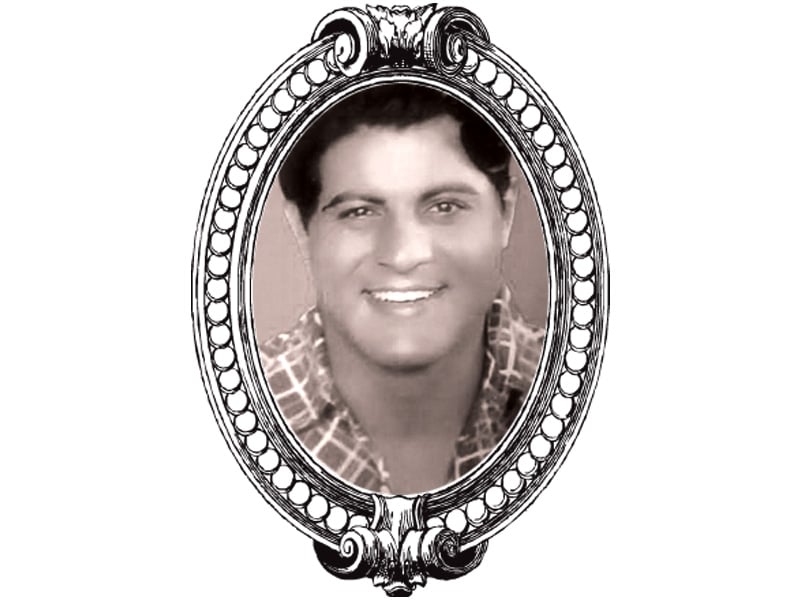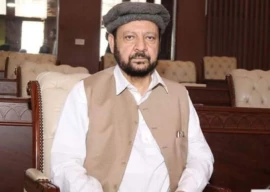
Long before Peshawar came to be known as the birthplace of Indian cinema legends such as Raj Kapoor and Dilip Kumar it was home to Gul Hamid — the Pakhtun actor who made his mark before sound came to Indian cinema.
Born in 1910 in the Pir Pai village, Nowshera, Hamid belonged to the Gamryani clan of the Yousufzai tribe. He left his job in the British Police to pursue his passion for acting — a craze that not only made him one of the most captivating stars of the Indian film industry, but also earned him the titles ‘Sitara-e-Hind’ and ‘Yousaf-e-Sani’. “He was a religious and down-to-earth person — no one in the village would take him for a movie star,” shared Pir Pai resident Gulraiz Khan, who has heard stories about him from his parents.
Hamid worked in seven silent movies, the first of which was director A R Kardar’s Safdar Jang that released in November 1930. “It was his overall persona that made A R Kardar offer him Safdar Jang,” said Muhammad Ibrahim Zia, writer of Peshawar Ke Fankaar. This was followed by five movies, Brave Heart, Golden Digger, Awara Raqasa and Sweet Heart. “Gul had an extraordinary personality and a charming face, which have been signature traits of actors from Khyber Pakhtunkhwa,” he added.

However, as sound came to Indian cinema, things started getting uncomfortable for this charming young man, who had so far, not spoken a single word on the screen. The arrival of Indian talkies led to a career lull for the actor, who had been relying on his looks and gesture to earn his spurs in the industry.
“Hamid could not adapt to changing trends in cinema because of his Pashto accent, a weakness that prohibits even today’s Pakhtun actors from taking up mainstream acting careers,” Zia shared.
And so began an unpleasant phase in the actor’s life, where he was ignored by a multitude of directors and producers. But his love for the industry remained unwavered. He took a break from acting and worked on refining his language. And after a couple of years came his first talkie, Heer Ranjha.
Heer Ranjha was followed by one of his most famous films, titled Chandra Gupt, which is a biopic on Emperor Chandra Gupt Maurya. But his breakthrough performance was in the film Seeta, which was the first-ever film of the subcontinent to be screened at the Venice Film Festival. “His next target was Hollywood as he was not satisfied with the quality of work in subcontinental movies,” shared Dr Ahmad Jamal, who is Hamid’s nephew.

But given the fine line between an actor’s public and personal life, many people of his village developed negative views about him. “The people from Hamid’s village were excited about his movies, but at the same time, were confused,” Dr Jamal told us. “They would consider movies as reality and as a result, started viewing him in a negative light,” he added.
Apart from his achievements as an actor, Hamid was a fine storyteller and was the first person to make a film on the Pakhtun culture. Khyber Pass was an East India Company production that was written and directed in Hindi by Hamid and starred British actor Patience Cooper, who also became his love interest during the film’s shoot.
“It was during this movie that Hamid married Patience, but kept it a secret as he was already engaged to someone in the village by his mother’s choice,” Zia shared. Cooper accepted Islam after marrying him and named herself Sabra Begum. Hamid’s family didn’t know about his marriage to Cooper for several years until they opened an iron-made box containing letters that were exchanged between the two of them.

Though the movie failed to attract a large audience and was criticised for its storyline, Hamid remained undeterred and kept making films till he was diagnosed with Hodgkin’s disease. His untimely death at the age of 26 left his dream of reigning over the industry for a longer period of time unfulfilled.

“The people of Pir Pai loved him and associated several stories to his sudden death like he was poisoned by rivals, but whatever the case may be, he is still alive in our hearts and will never be forgotten,” said Gulraiz Khan. Hamid is buried in his own village with ‘Sitara-e-Hind’ etched on his grave.
Published in The Express Tribune, May 18th, 2014.
Like Life & Style on Facebook, follow @ETLifeandStyle on Twitter for the latest in fashion, gossip and entertainment.
COMMENTS (3)
Comments are moderated and generally will be posted if they are on-topic and not abusive.
For more information, please see our Comments FAQ









1732240636-0/WhatsApp-Image-2024-11-21-at-19-54-13-(1)1732240636-0-270x192.webp)







what a diamond personality he was, I saw his photo and read about him in Ibrahim Zia Book he was genius, May his soul in rest
@Chachoo: yes it's like every migratory bird in England and London become English suddenly just by migrating and living there.
Kapoors and Kumars are not Pukhtoons but they were the Resident of Peshwar. Some people think that anyone living in Peshawar is a Pukhtoon but it is not the case at all. Kapoors migrated from Northern Punjab and inhabited main Peshwar city when Ranjit Singh attacked Peshawar in the late 18th Century.